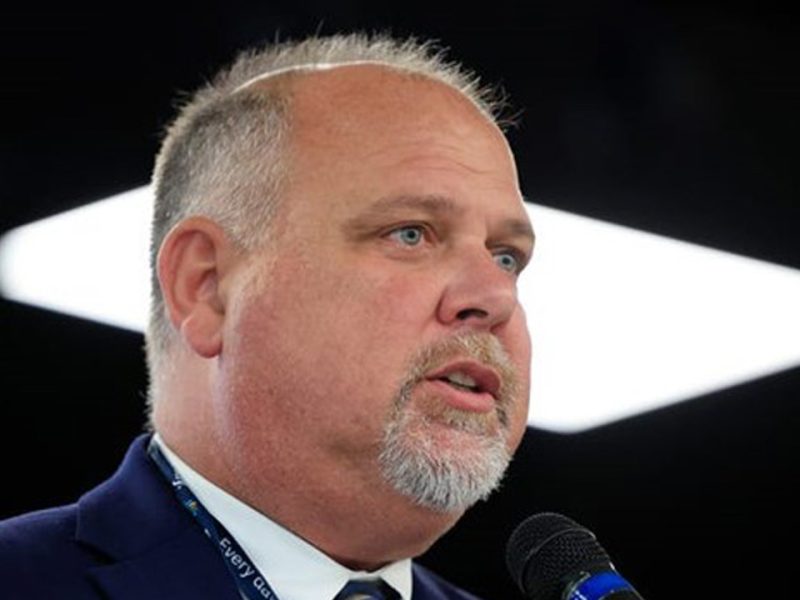The Opioid Crisis Hit Schools Hard. Now They Want Drug Companies to Pay Up
EducationWeek | By Mark Lieberman | June 15, 2021
School districts across the country that say they’ve collectively spent at least $127 billion helping students affected by the opioid addiction crisis are pushing in court to wrest compensation from the companies that manufacture those drugs.
Lawyers representing schools in several massive ongoing lawsuits arrived at that cost estimate with the help of education finance and health experts, and published it in an April 23 court filing. Experts believe that figure— equal to nearly a fifth of the nation’s annual overall spending on K-12 public schools—almost certainly underestimates the true cost of special education services and social-emotional supports for students affected by opioid addiction. It’s also likely to be adjusted upward once researchers fully process the impact of the COVID-19 pandemic on drug addiction and its ripple effects.
“There are so many kids we didn’t have eyes on. As those kids return in the fall, we’re going to be seeing double the issue, triple the issue,” said Jack Cullen, superintendent of the Marion County schools in West Virginia, where the district’s special education costs and disciplinary issues are rising even as the district’s overall enrollment has dropped by 500 students in recent years. His district is party to one of the lawsuits.
Across the nation, 7.3 million K-12 students qualified for special education services overall during the 2019 school year, the most recent school year for which federal enrollment data are available. That number reflects a nearly 10 percent increase over the preceding five years, far outpacing overall K-12 enrollment growth nationwide during the comparable period.
It’s impossible for schools to precisely determine the extent to which opioids are driving the number of students with disabilities.
But district leaders and advocates believe the opioid addiction crisis is a contributing factor. More broadly, they say, the crisis is damaging children’s physical, mental, and emotional health in ways that are virtually guaranteed to show up in classrooms.
Laurie VanderPloeg, associate executive director for professional affairs at the Council for Exceptional Children, an advocacy organization for special education, is reluctant to draw a concrete link between the opioid crisis and the rise in students qualifying for special education services.
But, she said the increased awareness of the crisis’ effect on children and families has prompted schools to increase their investment in services that provide social-emotional support. That means hiring more counselors, social workers, and other qualified personnel, which has been challenging due to a nationwide shortage in those workers, she said.
“That takes a system to do that, not just on an individual or classroom basis,” VanderPloeg said.
Lawyers suing drug manufacturers on behalf of school districts have formally requested triple their $127 billion cost estimate in damages.
“We want those costs to be borne by the companies that caused the problem, not the citizens of the school districts who are the innocent victims along with the children,” said Jim Humphreys, a former West Virginia state senator who’s now representing school districts in the state in their fight against opioid manufacturers and distributors.
Lawsuits are piling up as schools seek compensation for their efforts to address opioids
More than five dozen districts, including big ones like Baltimore and Rochester, N.Y., and smaller ones in states including Kentucky, Maine, New Hampshire, New Mexico, and West Virginia, have signed on to a class-action lawsuit filed last December in the U.S. District Court for the Northern District of Ohio. The lawsuit, which also includes city and county governments among the plaintiffs, is seeking billions in damages from Purdue Pharma, Johnson & Johnson, and other drug companies.
Many of those districts are also pursuing compensation through Purdue Pharma’s ongoing bankruptcy filing process. Hundreds more districts have signed on as creditors in the filing, hoping to get a small piece of a settlement without pursuing litigation of their own.
On June 7, several districts that are listed on the lawsuit against manufacturers also joined a class-action lawsuit against McKinsey, the consulting company that advised manufacturers on marketing strategy and helped “turbocharge” distribution of the deadly painkillers. That case, currently housed in the U.S. District Court for the Northern District of California, also includes municipalities and nonprofits.
Some affected districts, like the Cabell County schools in West Virginia, are letting their municipalities pursue lawsuits of their own, hoping to get a piece of any settlement funds that emerge. A handful of others, including the Irving and Texarkana school districts in Texas, are engaged in separate lawsuits with similar aims.
Education Week has thus far identified 68 school districts that are named in court filings or media reports as pursuing litigation against opioid manufacturers and distributors. The actual number is likely much higher. Several lawyers told Education Week that they continue to regularly field calls from school districts interested in joining the cause.
Representatives for Purdue Pharma and other manufacturers involved in lawsuits by school districts did not return multiple email requests for comment. A spokesperson for McKinsey said the company denies wrongdoing and expects the settlement funds that states have already received to cover expenses school districts have incurred.
“We will defend ourselves against cases relating to our past work for opioid manufacturers because that work was lawful and we deny any allegations to the contrary,” the spokesperson wrote in an email.
The cases mirror school districts’ ongoing efforts to bill vaping companies like JUUL for the costs they’ve incurred for prevention programs, counseling, and treatment as using e-cigarettes has become a popular habit among teenagers.
n the case of opioids, school districts are following on the heels of a massive nationwide campaign by local officials to compensate for the strain on their investments in police officers, drug treatment facilities, and mental health resources. That campaign has yielded $26 billion so far, according to the Opioid Settlement Tracker run by Christine Minhee, a researcher at the University of Washington School of Law.
School districts believe they’ve become central to recovery efforts around the opioid addiction crisis, and deserve to be compensated for that costly work.
“They’re already engaged in the very activities that we need more resources for, so we’re fighting to get [those resources] as much as possible channeled in the direction of schools,” said Matt Piers, a government and public finance lawyer for Hughes Socol Piers Resnick & Dym, which is one of several firms representing schools in suits against the manufacturers and McKinsey.
How the opioid addiction crisis has fueled costs for special education and other services
The current opioid crisis can be traced back to the 1990s, when major pharmaceutical companies convinced regulators and the medical community that certain prescription painkillers were safe to broadly prescribe when patients brought pain-related concerns.
But those drugs proved far more addictive and deadly than advertised—nearly 500,000 people between 1999 and 2019 died from an overdose involving an opioid, including roughly 75,000 Americans over the last five years, according to data from the Centers for Disease Control and Prevention. The proliferation of prescription opioids also led users of those drugs to use illegal drugs like heroin and fentanyl. In 2017, roughly 1.7 million people in the U.S. suffered from a substance abuse disorder connected to opioids.
Many district leaders attribute increases in the number and percentage of K-12 students who qualify for special education services in the last five years at least in part to the arrival in the school system of students whose parents have dealt with opioid addiction.
Children whose mothers were abusing opioids during pregnancy are more likely to develop neonatal abstinence syndrome, a neurological condition in which infants experience the effects of withdrawal from drugs they’re exposed to before birth. NAS can have all manner of symptoms, including long-term developmental and learning disabilities, behavioral problems, and speech impairments, according to a 2018 Pediatrics study.
School officials emphasize that the problems stemming from the opioid epidemic extend beyond students whose mothers were addicted while they were pregnant. The trauma young children experience at home—parents using drugs, getting arrested, passing guardian responsibilities to grandparents or other family members, and in some cases dying—shows up in students’ ability to manage heightened emotions and absorb learning material.
Those students might not qualify for individualized education programs, but they can require specialized resources and attention all the same.
“If they don’t feel safe at home, or the police were at the home the night before, when they come to school they’re not going to be in the zone to where they’re going to be able to learn in the best way possible,” said Ryan Saxe, superintendent of the Cabell County schools in West Virginia. His district is hoping for a portion of any settlement relief that the county government gets through its own lawsuit.
At one point at the height of the opioid crisis, more than 20 people per day in Cabell County were dying from complications related to addiction. The addiction crisis there was the subject of an Academy Award-nominated short film called “Heroin(e).
More recently, officials in the 12,000-student school district have been eyeing a substantial increase in the number of students with special education needs. Even as the district’s enrollment in the early grades and overall has declined slightly, the number of K-12 students with a specific learning disability has risen from 476 in 2015 to 685 in 2021, according to data collected by the district’s director of special education. District leaders suspect opioids have contributed to that increase.
Until four years ago, several of the district’s elementary schools shared a single social worker. Now, every school has its own. Five schools in the district also tapped into a state-funded Communities in Schools grant program that brings local drug treatment and mental health services directly to school buildings.
“While we have been the epicenter of the opioid epidemic, we’re becoming the epicenter of the recovery and the epicenter of the solution also,” said Saxe.
But the services eat up considerable funds. The district has had to tap into its local excess levy for funds for new staffing. The state grant for the Communities in Schools program will expire in the coming years.
“If we’re not able to renew it, we would have to look at what other programs or priorities would have to be offset in order to continue,” Saxe said.
Districts large and small have felt the effects of opioid addiction
The Cabell County district benefits financially from its large student population, which confers more overall annual per-student state aid, and from being near Marshall University and a hospital, Saxe said. More-rural districts can’t take advantage of those benefits.
The Marion County district, with roughly 8,000 students, has one social worker for every two schools—mental health experts who provide crucial links to resources and support services that suit students’ specific needs.
Cullen, the superintendent, said money from recent federal COVID-19 stimulus packages will enable the district for the first time to add a behavior specialist to aid the district’s two school psychologists. School staff need all the help they can get, he said.
“When I went to college 40 years ago, there was nothing in there on how to deal with the behavior issues we’re seeing,” Cullen said. “Students picking up a chair and swinging it at an instructional aide or teacher.”
To help accommodate rising costs for special education and other support services, Cullen has had to eliminate or consolidate nine district office positions, including curriculum coordinators, early-childhood specialists, an accountant, and a director of career-technical education, as those officials moved elsewhere or retired.
“When I went to college 40 years ago, there was nothing in there on how to deal with the behavior issues we’re seeing.
Jack Cullen, superintendent, Marion County schools in West Virginia
In Baltimore, where death rates from opioid abuse soared a few years ago, the school system joined the lawsuit against opioid manufacturers in an effort to recoup increased health-care costs for employees and special education costs for students, a district spokesperson said in a statement.
The Manchester, N.H., schools are also among those suing opioid manufacturers. Currently, one in five of the district’s students qualify for an individualized education program, up from between 10 percent and 15 percent a decade ago, said John Goldhardt, the district’s superintendent. The current percentage is well above the nationwide average of roughly 14 percent.
District officials believe opioids played a role. “I don’t have the scientific, quantitative data to show that’s what it is, but you have to wonder, is that why it’s gone up so much?” Goldhardt said.
School districts hope the lawsuits raise awareness as well as money
The road ahead for school districts’ lawsuits isn’t an easy one. States and local governments got in early with settlements, which could mean the money will dry up before schools get to it.
Making the case for a specific amount of compensation is also challenging. Due to privacy considerations, it’s not always possible for district employees to ask a family member whether they’re addicted to opioids, or to determine whether a student’s learning disabilities or behavioral issues are a direct result of a family member’s opioid addiction.
The costs have added up over a number of years, which means districts have to sift through old balance sheets and make frenzied calculations to approach a number that encapsulates the scope of the crisis.
Some district leaders said they’re worried about the acceleration of overdose deaths and addiction cases that took place during the prolonged isolation wrought by the pandemic. The dislocation and isolation of the last year could lead to more students suffering related trauma—and steeper costs that could outlast federal stimulus funds that have helped some districts stay afloat.
For Humphreys, the West Virginia lawyer, the takeaway from ongoing efforts to quantify the damage is already clear.
“If they have to use so many thousands of dollars a year for taking care of the opioid-disabled children, obviously that takes money away from the chemistry lab, it takes money away from doing maintenance on the buildings,” Humphreys said.
District leaders and lawyers interviewed for this article said they hope the cases will highlight for the public that schools are on the front lines of the opioid crisis, which hasn’t abated since then-President Donald Trump in 2017 declared it a public health emergency.
“It’s just like Brown v. Board, the only way it came to light was through the justice system,” Goldhardt said. “Maybe this is the way that it becomes highlighted and addressed in a better way.”






